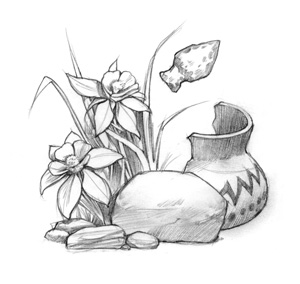 Leave No Trace: Leave What You Find
Leave No Trace: Leave What You Find
MINIMIZE SITE ALTERATIONS
Leave areas as you found them. Do not dig trenches for tents or construct lean-tos, tables, chairs, or other rudimentary improvements. If you clear an area of surface rocks, twigs or pine cones, replace these items before leaving. On high impact sites, it is appropriate to clean up the site and dismantle inappropriate user-built facilities, such as multiple fire rings and constructed seats or tables. Consider the idea that good campsites are found and not made.
In many locations, properly located and legally constructed facilities, such as a single fire ring, should be left. Dismantling them will cause additional impact because they will be rebuilt with new rocks and thus impact a new area. Learn to evaluate all situations you find.
AVOID DAMAGING LIVE TREES AND PLANTS
Avoid hammering nails into trees for hanging things, hacking at them with hatchets and saws, or tying tent guy lines to trunks, thus girdling the tree. Carving initials into trees is unacceptable. The cutting of boughs for use as sleeping pads creates minimal benefit and maximum impact. Sleeping pads are available at stores catering to campers.
Picking a few flowers does not seem like it would have any great impact and, if only a few flowers were picked, it wouldn't. But, if every visitor thought "I'll just take a few", a much more significant impact might result. Take a picture or sketch the flower instead of picking it. Experienced campers may enjoy an occasional edible plant, but they are careful not to deplete the surviving vegetation or disturb plants that are rare or are slow to reproduce.
LEAVE NATURAL OBJECTS AND CULTURAL ARTIFACTS
Natural objects of beauty or interest such as antlers, petrified wood, or colored rocks add to the mood of the backcountry and should be left so others can experience a sense of discovery. In National Parks and some other areas it is illegal to remove natural objects.
The same ethic is applicable to cultural artifacts found on public land. Cultural artifacts are protected by the Archaeological Resources Protection Act. It is illegal to remove or disturb archeological sites, historic sites, or artifacts such as pot shards, arrowheads, structures, and even antique bottles found on public lands.
Reprinted with kind permission of Leave No Trace: Center for Outdoor Ethics as part of a Partner member benefit.